Here's a hacky solution that incorporates some functions from the officer package, though the crux of it (changing underlying xml) depends on the xml2 package:
library(officer)
library(xml2)
doc1 <- read_docx("tempfile.docx")
# find nodes with background shading
doc.nodes <- xml_find_all(docx_body_xml(doc1), "//w:shd")
doc.nodes
# result (note background colour is described under w:fill, in hexcode format)
# {xml_nodeset (2)}
# [1] <w:shd w:val="clear" w:color="auto" w:fill="FFDD11"/>
# [2] <w:shd w:val="clear" w:color="auto" w:fill="FFDD11"/>
# change background colour to a shade of green
lapply(doc.nodes,
function(x) {
xml_attr(x, "w:fill", ns = xml_ns(x)) <- "22FF55"
})
doc.nodes
# check result (node colour has changed)
# {xml_nodeset (2)}
# [1] <w:shd w:val="clear" w:color="auto" w:fill="22FF55"/>
# [2] <w:shd w:val="clear" w:color="auto" w:fill="22FF55"/>
print(doc1, "tempfile_changed.docx")
Creation of the input word document for reprex:
library(officer)
library(dplyr)
# define a specific shade of yellow for ease of identification later
yellow.formatting <- fp_text(shading.color = "#FFDD11")
doc <- read_docx() %>%
body_add_fpar(fpar(ftext("hello", yellow.formatting),
" world")) %>%
body_add_par("good morning") %>%
body_add_fpar(fpar("and ",
ftext("good night", yellow.formatting)))
print(doc, "tempfile.docx")
Side by side comparison of tempfile.docx & tempfile_changed.docx:

